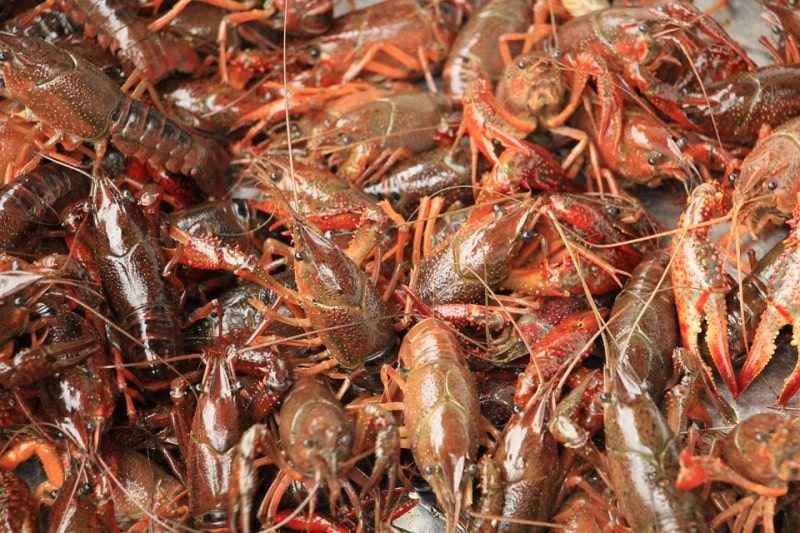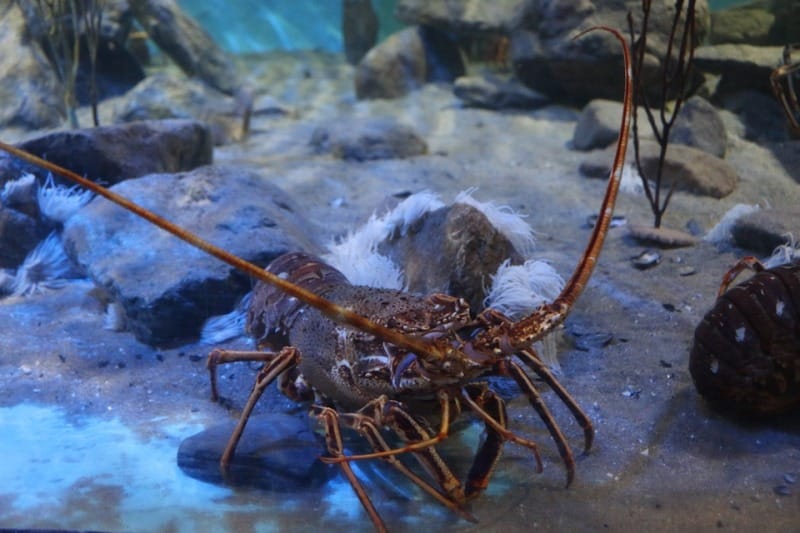A full guide to lobster farming for maximum profit in India
Lobsters are highly-priced seafood delicacies which are in high demand in international markets. Lobster is delicious seafood enjoyed by many people around the world. Lobster farming is a process that has been used since the early 20th century to meet the high demand for meat from these crustaceans. A healthy place to live, clean water, and lobster feed can help lobsters grow. Lobster farming is a viable and a very lucrative choice as lobsters are highly-priced marine crustaceans.
Lobsters have great market demand and price, and particularly live lobsters are the most preferred. Customers in affluent countries are ready to pay more money for fresh seafood. Lobsters are exported in different forms they are live, frozen tails, whole frozen, whole chilled, whole cooked, frozen and as lobster meat.

Different kinds of lobsters
Let us discuss different kinds of Lobsters;
Furry Lobsters: These lobsters have large antennae, though not as large as the spiny lobsters. These lobsters are thus named because of the protrusions on their body that make it appear to be covered in hairs. Furry lobsters are very small and manage to avoid most lobster traps.
Squat Lobsters: These lobsters are not a lobster at all. They resemble the clawed lobsters but are closely related to crabs and hermit crabs. Squat lobsters live in crevices, though they have been recognized to use their claws to dig in the sand for food.
Reef Lobsters: Reef lobsters have claws but are considered to be separate from clawed lobsters. These lobsters only have the set of claws on the first set of appendages and not on the subsequent pairs.
Clawed Lobsters: These types of lobsters have five sets of walking legs and three sets of claws. The first set of claws is much larger than the following two sets. Clawed very lobsters are important for the seafood industry because they have become the expected type of lobster. Clawed lobsters consist of the American lobster and the European lobster.
Spiny Lobsters: Spiny lobster is also called rock lobster. These lobsters are the broad category for lobsters that do not have claws on the front of the body. These lobsters are instead distinguishable because of the over-sized, thick antennae that give them the “spiny” appearance. Rock lobsters are most known for their “march,” the mass migration they do after rainstorms.
Slipper Lobsters: These lobsters also have the enlarged antennae and lack the front claws. They are flatter than the other lobsters and look like faces have been smashed. These lobsters often bury themselves in the mud during the day, instead of hiding in holes like the other lobster types. Because of this, they tend not to be as desirable for food.
You should also check the Tilapia Fish Feed Formulation.
Different types of Lobsters which are formed for profit:
There are three types of lobster which are farmed for profit:
Tiger lobster (Panulirus ornatus) – these types of lobsters is distinguished by its spotted legs;
Bamboo lobster (Panulirius Versicolor) – as the name suggests, they are stripes on the legs which resembles a bamboo trunk.
Adik-Adik lobster (Panulirus edulis) – this Adik-Adik lobster is recognized by its characteristic reddish back.
The most common lobster farmed is the tiger and bamboo lobsters as they grow fast and make the marketing size quicker leading to more profits.
Site selection:
- Keep the following in mind while choosing a site for pond.
- Choose a pond near a river or canal ensuring a constant supply of water. If you are not located near any water source, make sure to fit a tube well for continuous water supply.
- Has ample water supply free from pollutants, a considerable quantity of sand, and sufficient sunlight.
- Has a minimum depth of one meter during low tide.
Prepare your pond:
Prepare your pond before doing Lobster farming. This is critical to ensure the optimum growing environment for the lobsters. Clean and disinfect pond well, using certified cleaning agents and lime. This will remove harmful gas and viruses from the growing facility. Apply cow dung and such natural manures at the bottom of the pond and allow it to stay for 5 to 7 days. This will ensure the growth of aquatic organisms and give a good environment for the growth of lobster.
You may also like Kale Cultivation; Farming Practices.
Selecting Lobster species:
There are numerous lobster species obtainable. Among those species farming Adik-adik, bamboo and tiger lobsters are profitable. Because these species grow faster and have a huge demand and cost in the local and international market. These three species are very different from each other like their name. The adik-adik type lobsters are of reddish-black. Bamboo lobsters have striped legs and it seems similar to bamboos. On the other hand, tiger lobsters contain spotted legs. You can select any of these breeds depending on your location and desired product type.
Growing your lobsters:
Purchase Lobster larvae from hatcheries. Lobster Larvae production and preparing them up to a month are done at fisheries or hatcheries. You can stock 10 lobsters weighing 150 to 200 grams in a 1-sq meter pen. In general, approximately 10,000 pieces of larvae can be stocked per acre. Ensure supplier is near your farm so that there is minimal damage to the lobsters during transportation.
Feed Lobster twice a day with lobster feed. Lobsters are carnivores and feed on very small fishes. Primarily, you can start feeding it seaweed and consult your local hatchery on what to feed fingerlings. Monitor the development of the Lobsters at least twice a month to determine feed requirement and for the record as well as finance purposes.
You may be interested in Hybrid Coconut Cultivation; Yield; Varieties.
Provide good filtration to circulate oxygen and remove waste:
- A couple of good filters and a pump can maintain your water clean and filled with oxygen. This helps Lobsters to grow and prevents the disease from spreading. A gravity percolation filter system will de-gas and oxygenate the water. A mechanical-biological filter will remove waste from the water supply and convert it to a less toxic nitrate that is safe for the lobsters. Lastly, a submersible pump will circulate water through the filtration systems. Purchase these filters and install them in Lobster troughs.
- Keeping water clean and filtered is essential to protect Lobsters from disease, which can spread very quickly through a farm.
- Purchase filters and pumps from local farm provide stores, or online.
Stocking:
- Weigh Lobster fingerlings before stocking. Lobsters with 150-200 gms can be stocked in the pen at a density of ten pieces per square meter.
- Drop carefully and separately the fingerlings into the pen to avoid defacing the appendages of the fingerlings. Stocking must be done during high tide.
- Stock fingerlings of equal size. Lobsters are carnivorous. The bigger ones can eat very small lobsters.
Feeding and maintenance:
- Feed the lobster once a day preferably in the morning with any type of fish trash or fresh seaweed. Feeds must be chopped into small pieces.
- Using a bolo, clean the pen twice a month to eliminate sediments and barnacles that stick the net.
Grow-out in the land-based holding system:
Lobster rearing is successfully done in land-based holding systems with suitable environment condition. Critical water quality parameters contain the concentration of dissolved oxygen, ammonia, nitrite and carbon dioxide concentration. The concentration of nitrate, pH level, and salinity and alkalinity levels within the system are also necessary. The unionized ammonia is extra toxic than the ionized ammonium.

Ammonia concentration in culture water must be less than 2 mg/l and it depends on the water temperature and pH. The demand for oxygen is higher at the instance of molting and after the feeding. These typically happen during night hours. If optimum oxygen is not provided it directly affects the growth of Lobster as they are capable of adjusting the metabolism even at the low level of oxygen. Though lobsters can tolerate regular changes in salinity to a limited range, sudden dilution can lead to stress, susceptibility to disease and mortality.
Fertilizer:
Using fertilizer in the pond is necessary for Lobster farming business. Applying fertilizer in the pond helps to raise the natural food production for the Lobsters. Lobsters vary their shell at different stages of their life. They become sick when they change their shell. So you have to take extra care through this time. You can maintain some tree branches or bamboo in the pond during this time. It will shelter them and help to prevent the mutual attack.
How to harvest lobsters
- Lobster is harvested approximately 6 to 7 months after when they reach a weight of about 800– 1000 grams.
- Lobsters are gently scooped by using nets to avoid damage to the species.
- The newly-harvested Lobsters are then placed in a basin filled with seawater before packing.
- Do not harvest when it is raining, since Lobsters die when exposed to freshwater.
That’s all folks about lobster farming in India and types of lobsters farmed for profit.
You may also like Growing Rose Hydroponically.
I want to start the business of lobster, please guide me
I want to do lobster farming please guide me is training available on lobster farming in maharashtra
good morning am from the bahamas and i desires to start a spiny lobster aquaponics sea water farm. can you guide me. thank you